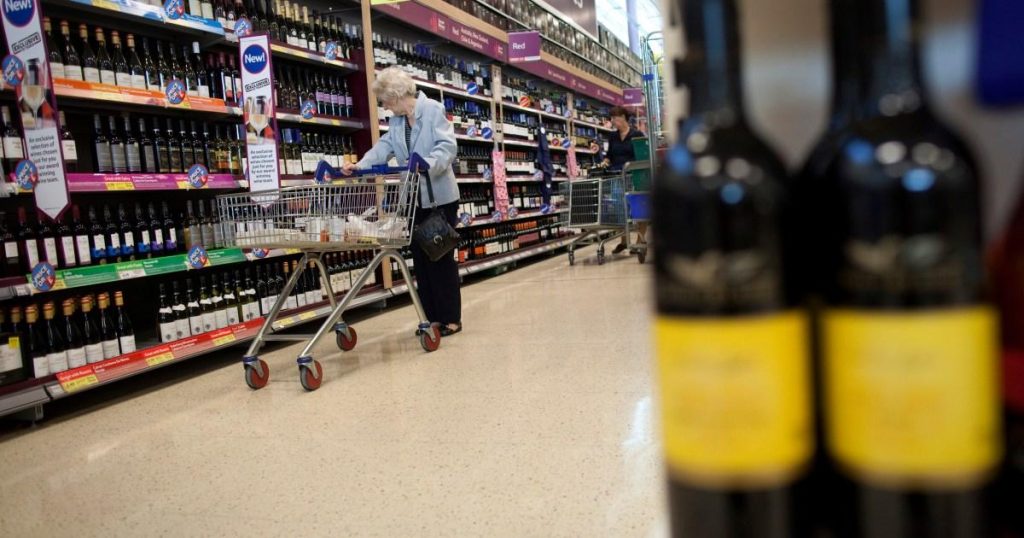The UK wine market is bracing for a price hike as a temporary tax break on certain wines expires on February 1, 2025. This reprieve, introduced by then-Chancellor Rishi Sunak as part of a broader alcohol duty reform in 2021, had shielded wines with an alcohol by volume (ABV) between 11.5% and 14.5% from the full impact of the new tax structure. This meant that all wines within this ABV range were taxed as if they contained 12.5% alcohol, effectively creating a flat tax rate within this bracket. Now, with the cessation of this temporary measure, the wine industry anticipates significant price increases, particularly for full-bodied red wines such as Malbec, Shiraz, and Cabernet Sauvignon, with some bottles potentially seeing a £1 overnight increase.
The new alcohol duty regime, which came into effect in August 2023, bases taxation on the strength of the alcoholic beverage. Consequently, the end of the temporary reprieve means wines will be taxed according to their precise ABV, with separate tax bands for every 0.1 percentage point difference between 11.5% and 14.5%. This translates to a complex system of 30 different tax bands for this ABV range alone. Wines from warmer climates like Australia and Spain, known for their higher alcohol content, are expected to be most affected by this change. This targeted taxation system aims to promote responsible alcohol consumption by incentivizing the production and consumption of lower-strength beverages. However, it has also introduced significant complexity for the wine industry.
The timing of this price increase, coinciding with the end of “Dry January,” a popular month of abstinence from alcohol, has added to the concern within the wine industry. Wine sellers are anticipating a negative impact on sales, as consumers may be less inclined to purchase wine at higher prices immediately after a period of reduced alcohol consumption. Some industry representatives have expressed concern that the cumulative effect of various challenges, including the new tax structure and other economic pressures, could lead to a “death by a thousand cuts” scenario for the sector. They argue that wine has become a “target for legislators,” highlighting the perceived disproportionate impact of recent policy changes on the wine industry.
The government, however, defends the alcohol duty reforms as a necessary step toward modernizing and simplifying the tax system while prioritizing public health. The Treasury argues that extending the tax reprieve for wines between 11.5% and 14.5% ABV would disadvantage lower-strength products, including some produced domestically in the UK. By linking taxation to alcohol content, the government aims to encourage the consumption of lower-strength beverages and promote more responsible drinking habits. This approach, while aligning with public health goals, has created significant complexities for the wine industry, particularly in terms of pricing and administrative burden.
The inherent variability in the winemaking process, particularly regarding ABV levels, further complicates the implementation of this new tax system. Unlike beer or spirits, where ABV can be controlled more precisely, wine production is susceptible to variations in ABV between and even within vintages. This unpredictability makes it challenging for producers to accurately predict the tax burden on their products and set appropriate prices. The complex system of 30 different tax bands for wines between 11.5% and 14.5% ABV adds another layer of difficulty for producers and retailers in calculating and applying the correct tax rates.
The upcoming price increase has sparked debate between the government and the wine industry. While the government maintains its focus on public health and emphasizes the fairness of the new tax system, wine producers and retailers argue that the complexity and impact of the changes are disproportionately affecting their sector. This conflict highlights the inherent tension between public health goals, economic considerations, and the unique characteristics of the wine industry. The long-term impact of this tax change on consumer behaviour and the wine market remains to be seen, but it is clear that the industry is facing a period of significant adjustment and uncertainty. The removal of the temporary reprieve represents a significant shift in the taxation of wine, with potential ramifications for producers, retailers, and consumers alike.


